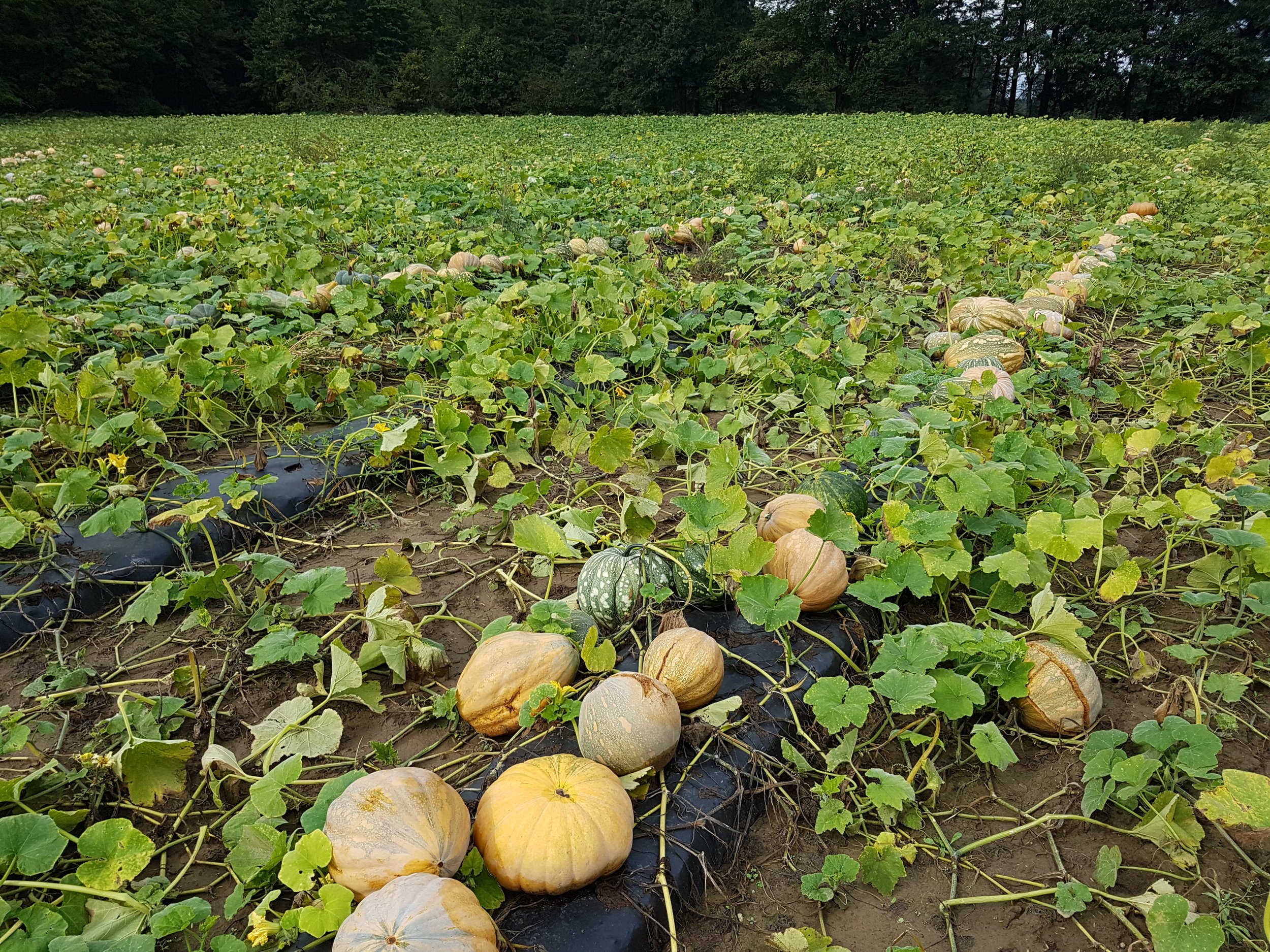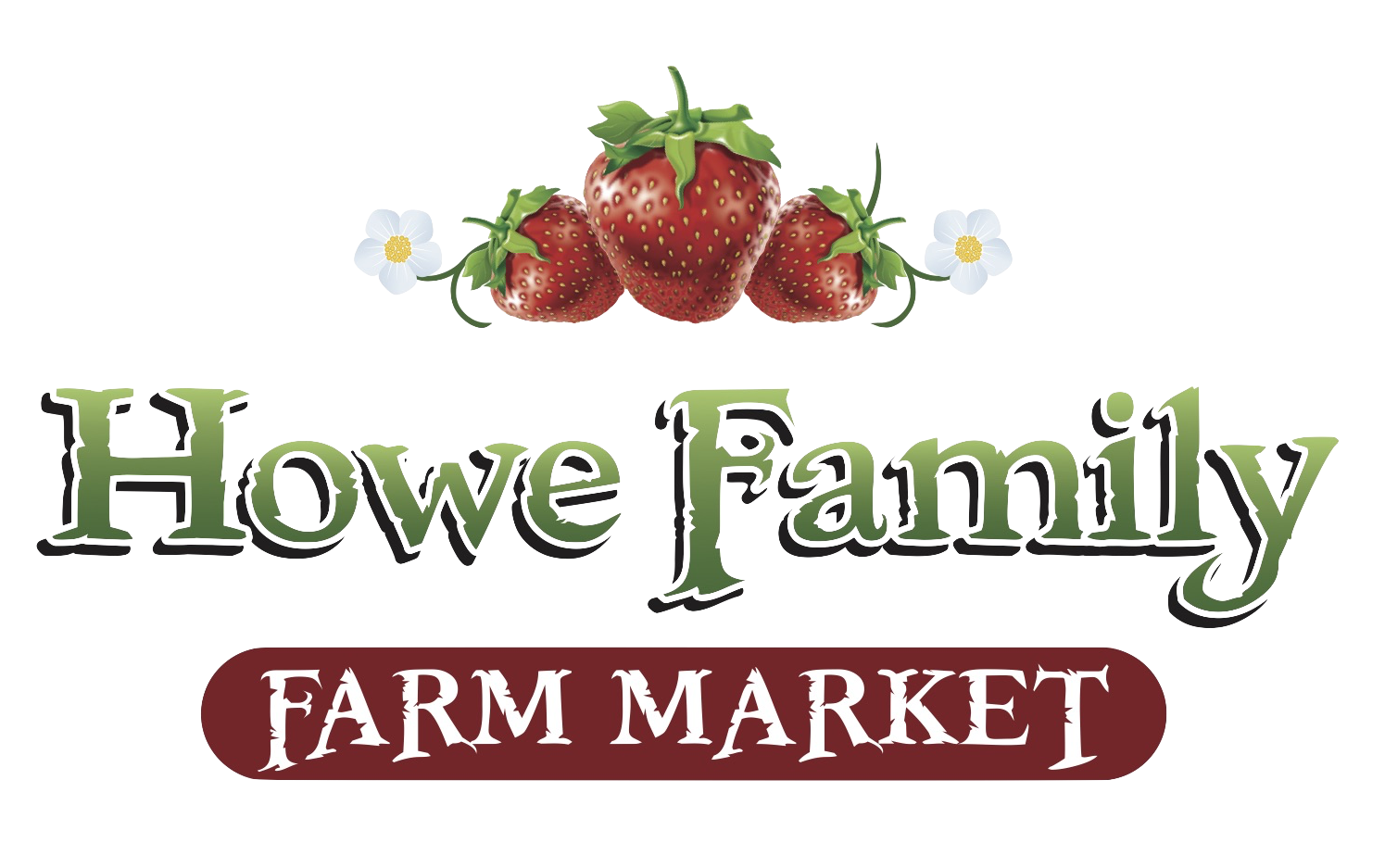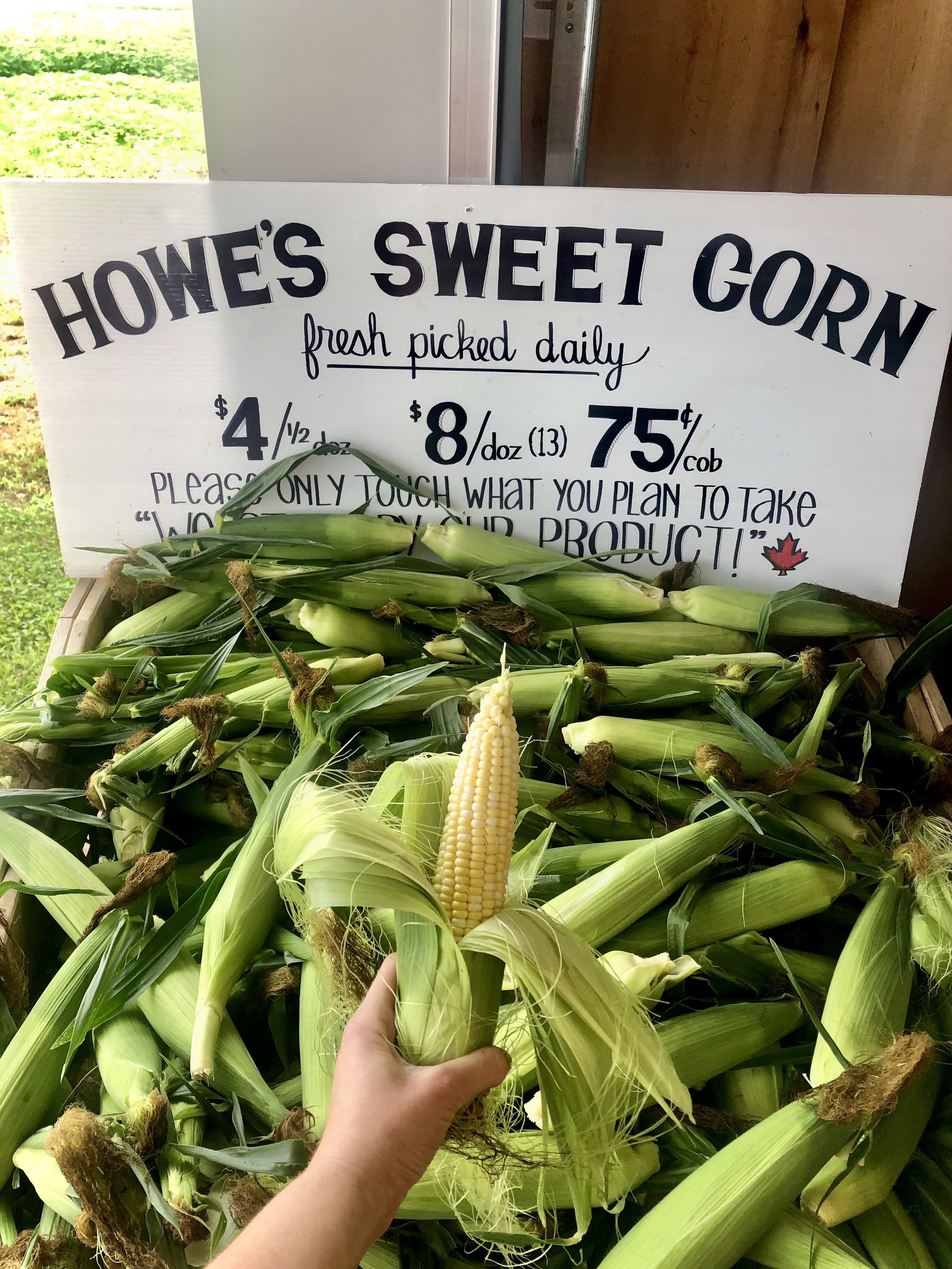
Our Crops
Growing the best quality fruits and vegetables as sustainably as possible.
Here at Howe Family Farms we have been growing strawberries for five generations, that’s over 100 years of growing experience. We believe the trick of growing a perfect strawberry starts with variety. We’ve grown countless varieties.
Strawberry farming for five generations.
Some grow vigorously; some bear an unbelievable amount of fruit. Others, have a really long shelf-life, but the most important characteristic is flavor. We only grow varieties of strawberries you’ll love to eat!

Strawberries
-

Growing Strawberries
Choosing a flavorful variety isn’t the only trick to growing a perfect strawberry. Care must be taken from planting to harvest. We not only take our time planting our strawberries perfectly, we go the extra mile when harvesting our crops to ensure you get the tastiest, farm fresh, strawberries.
-

Location, Location, Location
Elgin County is the perfect place to grow strawberries because of it’s proximity to Lake Erie and its fertile soils. South Western Ontario‘s latitude exposes us to long daylengths during the summer, this allows the strawberry plant and fruit to accumulate more sugars, which is one of the reasons why Ontario strawberries are so sweet.
-
Quality Berries
The most important part of growing strawberries is the harvest. Strawberries do not have a very long shelf life. For this reason, we have picked up a few tricks over the years to prolong the shelf life of our strawberries. This includes; extremely stringent grading policy, as well as a protected growing systems that keeps rain off our berries!
-
Environmental Responsibility
We have been growing strawberries on the same family farm for over 100 years, sustainability is at our core of our families values. We farm using the best and safest organic and conventional resources available. This involves using an Integrated Pest Management approach for monitoring pests, using natural and beneficial insects to control harmful pest, and even modifying our growing environment by using a plastic tunnel to protect our strawberries from rain.
You may have noticed our NEW strawberry packaging. We’ve tried alot of different packaging over the years, looking for a solution that is recyclable or compostable that doesn’t impact fruit quality. We hope you love our new recyclable packaging as much as we do!
-

Freshness Guaranteed
Our harvest process has 3 verification points; the harvester who picks and packs each quart, the patch boss who spot checks harvested quarts within the field, gives guidance and further training to pickers if need be, and the grading crew who gives a 360° inspection of the harvested quart, removing any bruised berries and filling any quarts that are not quite full. Simply put, we do not accept bad berries on our strawberry farm! We have always believed, quality must be at the forefront of our business.

Pumpkins
Our pumpkin patch is our pride and joy here at Howe Family Farms. We are a leader in innovation and growing the best, most enjoyable pumpkins.
It’s all due to a combination of having a great location with an abundance of natural resources and proven growing techniques.
Our Pride & Joy
-

Award Winning Pumpkin Patch
With over 40 years of experience growing pumpkins and gourds we always strive for something better. Something reducing our costs of production, preventing soil erosion, increasing soil health, adding organic matter, reducing our herbicide use, and above all producing a cleaner, better pumpkin.
Sounds challenging yes, but when you know the in’s and the outs of the pumpkin patch you start to look for new ways to grow a pumpkin. We were recognized for our efforts in producing a better pumpkin when we were awarded with a Regional Premier’s Award for Agri-Food Innovation Excellence because of a unique pumpkin growing technique developed right here on our farm!
-

Our Process
The process involves growing a rye cover crop in the fall. When the spring pumpkin-planting season arrives, our custom-made roller knocks down the rye prior to seeding. The new approach has slashed labour costs for weeding, prevented soil erosion, increased soil health and reduced our herbicide use.
Growing the pumpkins on a thick bed of fallen rye also means less contact with the soil which reduces the need to wash off soil, producing a cleaner jack-o-lantern.Even this baby fawn appreciates our no-till planter!

Melons
Juicy, Sweet & Delicious Ontario Watermelons
Is there anything better than biting into a juicy, sweet and delicious watermelon or cantaloupe on a hot summer day? Our answer, no way!
We don’t believe we’re the only ones who feel this way, and this is why we take the greatest care when growing our melons. They may look durable, however melons can be quite fragile and take a delicate hand to get just right.
-

The Start
Work begins in the early spring for our cantaloupe and watermelon crop. Each seed is planted by hand into a growing tray and grown in our greenhouse for approximately one month until it is ready to be transplanted into our field.
-

Transplanting Melons
We plant both cantaloupe and watermelon onto black plastic mulch which helps the plant grow by increasing soil temperature, reducing weed pressure, and conserving soil moisture. Honey bee hives are placed throughout the field in order to ensure each cantaloupe or watermelon flower gets pollinated.
-

Harvesting
Cantaloupe and watermelon are usually ready to be harvested around the last week of July until early September. We harvest each melon by hand to ensure each melon is treated with the tender care it deserves. Along with this, harvesting each melon by hand ensures only the best melons make it to our market!
Have you ever wondered what a melon farm looks like? Yes, we thought so! So, we made this video to show you our melon farm, and how we grow and harvest them to ensure you get only the best.
How do we do it?

Caribbean Pumpkins
A taste of the Caribbean
Caribbean (Jamaican) Pumpkin have a smooth and sweet flavour paired with deep orange and dense flesh – a few of the reasons why these pumpkins have become so popular at our farm! Its the perfect pumpkin for soups, cubing, and our favourite served as a traditional pumpkin choka.
Jamaican pumpkins are available from September until mid-January. When we harvest, we allow the fruit to cure in the field on top of plastic mulch. This helps to harden the skin and improves the quality and shelf life of the pumpkin.
-

The Start
Work begins in early spring inside our greenhouse to get a head start on the growing season. Each seed is planted by hand into a growing tray and grown in our greenhouse for approximately one month until it is ready to be transplanted into our field.
-

Transplanting Pumpkins
We plant into black plastic mulch which helps the plant grow by increasing soil temperature, reducing weed pressure, and conserving soil moisture. Underneath each bed of plastic hides a drip irrigation tube that irrigates our crop.
-

Harvesting
Jamaican pumpkin are usually ready to be harvested around the first week of September. We harvest each pumpkin by hand to ensure only the best make it to our market.
-

Authentic Caribbean Pumpkins
Not to be confused with varieties that are meant for decoration like Fairy Tale, Musque De Provence, or Calabaza squash. Our variety is authentically Caribbean.

Sweet Corn
A Summertime staple on our farm, our sweet corn is juicy and delicious! We take great pride in our sweetcorn, harvesting only the best for our family farm market and country bakery locations.
Our sweet corn
Our sweet corn is a family favorite, and we put great effort into growing the highest quality with the best flavour. When we look back on past summers, some of our favourite times involved getting together with friends and family, almost every occasion involved a barbecue, and if it was a good barbecue- it involved our sweet corn!
Not all sweet corn is grown equally. It all starts with the right variety. Each year we experiment with dozens of new varieties, but only a few varieties make the grade. We currently grow 6 staple varieties, each with a slightly different harvest period, tenderness, colour, and flavour. Every variety is produced using conventional plant breeding methods, and grown using an integrated pest management approach.
We select our varieties entirely on eating quality; first it has to pass our families dinner test, if it passes old man Howe’s approval then we give our customers a chance to taste and critique. If, and only if the feedback is overwhelmingly exceptional, we add the new variety to next years cropping plan to be sold at our markets.
We take extreme measures to ensure that your next barbecue or get-together is a hit because we want the food on your table to be as memorable as the company you are sharing it with.
-

Fresh sweet corn
Sweet corn converts its natural sugars into starch very quickly, which is why it can be so difficult to find good sweet corn at a grocery store, or why some places have very inconsistent flavour and quality. If you are going to put the effort in to preparing a fresh healthy meal for your friends or family, we won't leave you disappointed
-
Field to table in minutes, not miles
Our sweet corn is grown a stones throw away from our market, it's travel time from the field to your table takes only minutes, not days. This ensures every cob is consistent in terms of quality and flavour.
-

Gourmet Sweet Corn
Try it on the barbecue! Start by removing a few layers of the husk, leaving 1 layer on to protect the kernels, throw on the barbecue (or even directly in the fire pit) and let cook until slightly golden brown. No salt, butter, or pepper needed!
Market Garden
For the past several years we have been working with Farms at Work to improve the habitat and population of our Squash Bees which are crucial for growing our Pumpkin crop. In the process we created a truly unique and diverse garden full of an assortment of beneficial insects, pollinators, flowers, fruits and vegetables.
What’s in our garden?
You can find; tomatoes, peppers, cucumbers, leeks, onions, okra, eggplant, ground-cherries, grapes, dill, herbs, loofa sponge, zucchini, kale, beans, spinach, poi (malabar spinach), swiss chard, bittermelon, sunflowers, gladiolas, cosmos, lisianthus, zinnias and much more.




